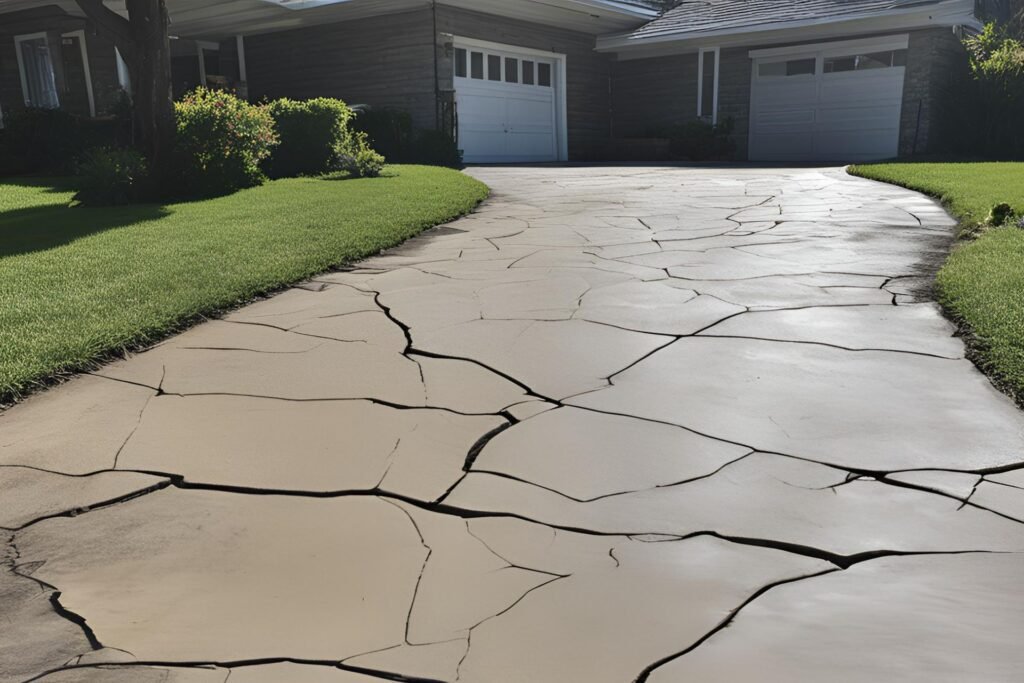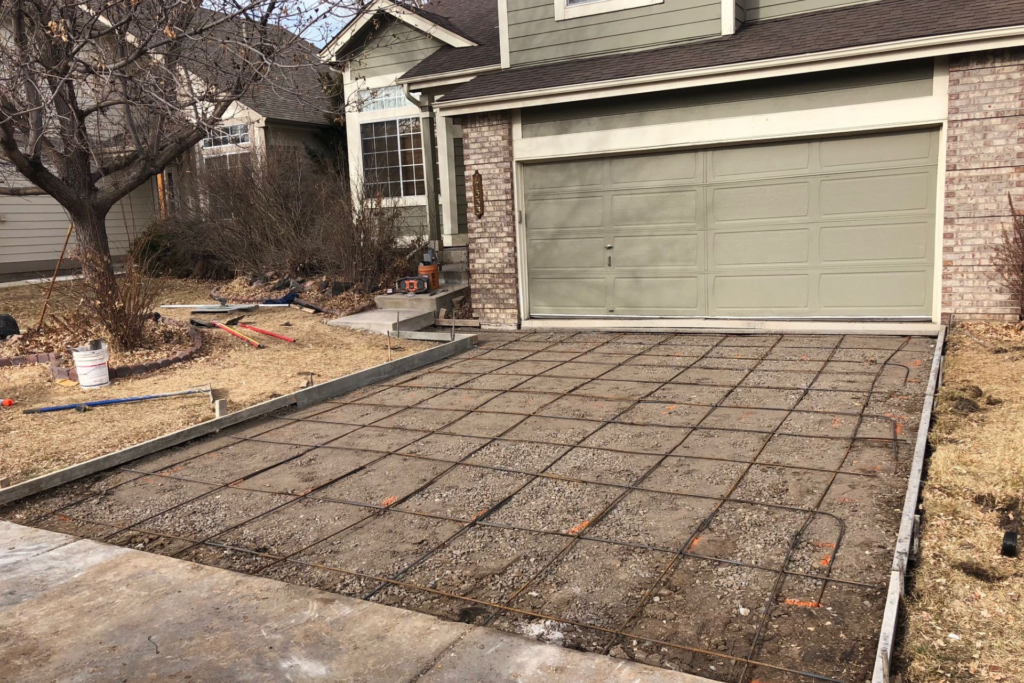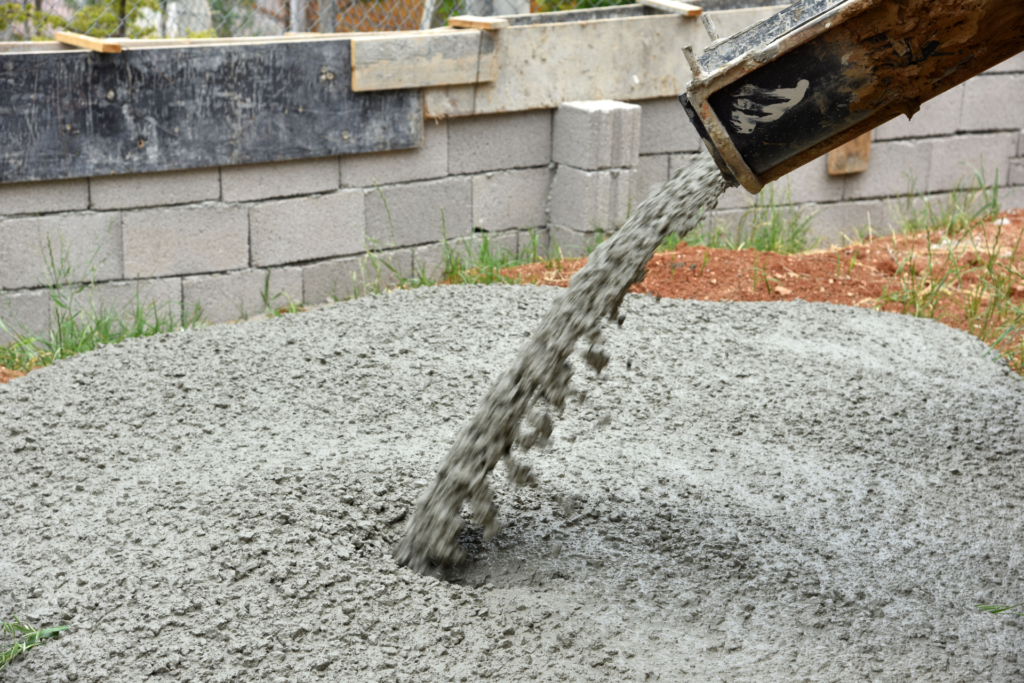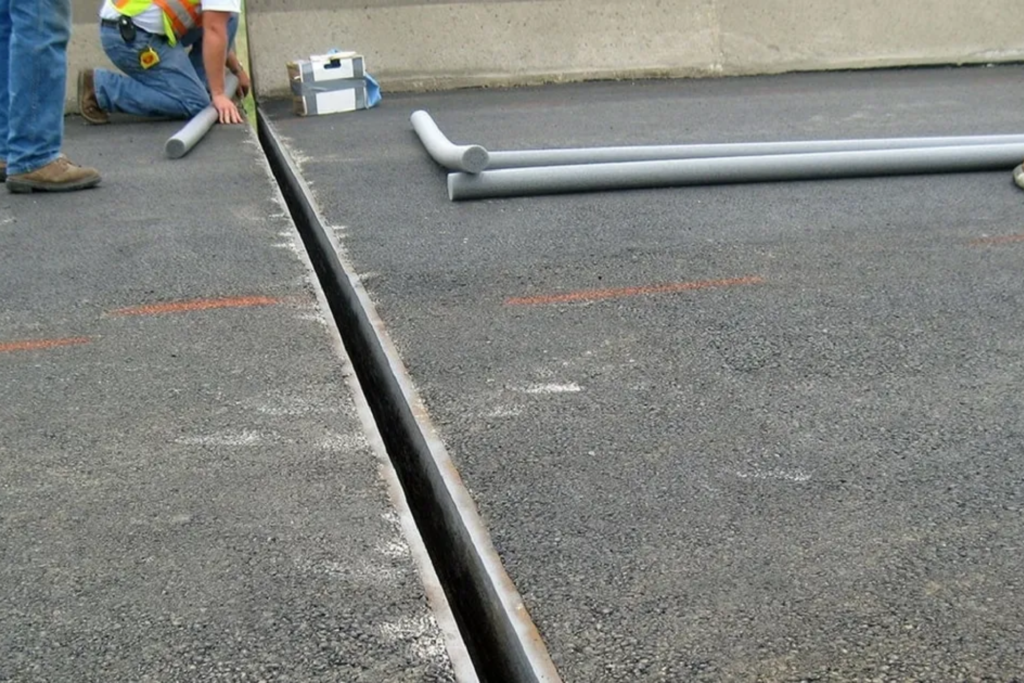Welcome to your complete guide on understanding council rules for driveways in New Zealand! Whether you’re planning to build a new driveway or modify an existing one, it’s essential to know that there are specific regulations in place to ensure your project meets local requirements. Ignoring these rules can lead to unexpected fines, complications when selling your property, or even having to redo your driveway altogether. In this blog, we’ll simplify the key guidelines around driveway design, permissions, stormwater management, and safety regulations, giving you everything you need to navigate the process confidently and stay compliant with your local council.
In New Zealand, council rules for driveways typically require homeowners to obtain consent for new driveways or significant modifications, depending on factors like driveway size, slope, and stormwater management. Each local council has its own specific regulations, including width, gradient, and material requirements to ensure safety and environmental standards are met. Before starting any driveway project, it’s essential to check with your local council to understand the specific rules and avoid potential fines or compliance issues.
Table of Contents
Why Council Rules Matter For Driveways In New Zealand
When constructing or upgrading a driveway in New Zealand, it’s essential to understand why council rules are in place and the impact they have on your property and the surrounding community. Complying with local regulations ensures a smoother process for property owners and contributes to broader public safety and environmental protection efforts. Here’s a closer look at why these rules matter and what happens if they’re not followed.
The Importance of Compliance
Council rules for driveways in New Zealand are more than just a formality—they play a crucial role in maintaining public safety, ensuring accessibility, and protecting the environment.
1. Public Safety: Driveways intersect with public roads, so their design and placement must minimize risks for pedestrians and drivers. Rules often regulate the visibility at the entrance of the driveway, ensuring there are no blind spots that could lead to accidents. Proper drainage systems, for instance, prevent water from flowing onto public roads, which can cause slippery conditions and create hazards.
2. Accessibility: Councils also ensure that driveways don’t obstruct pathways or make it difficult for people, especially those with disabilities, to access public spaces. Standards ensure that driveways meet certain width and gradient requirements, making them accessible for all vehicles, including emergency and waste management services.
3. Environmental Protection: Driveways can significantly impact stormwater runoff, which can affect the local environment. Councils impose regulations to prevent issues like flooding or soil erosion, ensuring that driveways don’t contribute to excessive water flow into public drains or natural bodies of water. They might also dictate materials that are environmentally friendly or require certain landscaping measures to offset potential harm.
Consequences of Non-Compliance
Failing to adhere to council rules for your driveway can lead to several complications—some of which can be costly and inconvenient in the long run.
1. Fines and Penalties: One of the immediate consequences of not complying with council regulations is financial penalties. Councils have the authority to issue fines if your driveway is found to be non-compliant, which can add unexpected expenses to your project. In some cases, councils might require the removal or modification of the driveway, leading to further costs.
2. Resale Issues: If your driveway doesn’t meet the local council’s standards, it could negatively affect the resale value of your property. Prospective buyers may be hesitant to purchase a property that requires additional work to bring it up to code. Furthermore, non-compliance might delay the sale process if retrospective approvals are needed.
3. Legal Complications: In the worst-case scenario, legal action might be necessary if non-compliance causes damage to public infrastructure, such as water drainage systems, or results in accidents on public roads. Legal disputes can be both time-consuming and expensive.
Regional Differences
New Zealand’s local councils operate independently, meaning driveway regulations can differ between regions. What’s acceptable in one district may not meet the standards of another. For example, urban areas may have stricter rules on driveway width and placement due to the higher volume of traffic, while rural councils may have more lenient guidelines. Additionally, councils in environmentally sensitive areas might impose extra regulations to protect local ecosystems.
It’s important to consult with your local council to understand the specific rules that apply to your area before starting any driveway work. This ensures you’re fully compliant and helps avoid costly mistakes down the road. By following these guidelines, you’ll contribute to public safety, preserve your property’s value, and protect the environment.
In summary, complying with council rules when constructing or upgrading your driveway is not only a legal requirement but a step towards fostering a safer, more sustainable community.

Do You Need Council Consent For A Driveway?
When considering installing or modifying a driveway, understanding whether council consent is necessary is crucial. Local regulations often determine if you need approval, and knowing the rules can save you time, money, and legal complications. Here’s a detailed breakdown of what you need to know about council consent for driveways.
General Consent Requirements
In most cases, whether you need council consent depends on the scope of the driveway work and your location. Generally, minor repairs or replacing an existing driveway with the same materials may not require consent. However, if you’re constructing a new driveway, altering the size or location of an existing one, or making significant modifications (such as widening), it’s likely you will need to obtain council consent. This is because changes to driveways can impact public access, traffic flow, and stormwater management.
Councils require consent to ensure safety standards are met, both for your property and the surrounding environment. It also ensures the driveway aligns with local planning rules and regulations. If you proceed without consent when it’s required, you could face fines, be forced to remove the work, or find yourself with complications when selling your property.
Resource Consent vs. Building Consent
It’s important to distinguish between resource consent and building consent, as they serve different purposes.
1. Resource Consent: This type of consent is more common for driveway projects and relates to the impact your driveway could have on the environment and the community. It assesses whether the driveway complies with zoning laws, environmental standards, and urban planning rules. Resource consent is typically required if your driveway project affects public roads, footpaths, or water drainage systems. For example, installing a driveway in a heritage area or one that interferes with natural water flows may trigger the need for resource consent.
2. Building Consent: On the other hand, building consent is concerned with the structural safety of construction projects. While it is less common to need building consent for a driveway, it might be required in cases where the driveway involves retaining walls, complex grading, or drainage works that could affect the stability of the land. If any part of the driveway construction could pose a safety risk, you might be required to apply for building consent in addition to resource consent.
In short, resource consent is the more frequent requirement for driveways, particularly when they impact the environment or local infrastructure.
Exemptions from Consent
While many driveway projects require council approval, there are certain exemptions. For example:
- Minor Repairs: Simple repairs, such as patching up a few cracks or replacing sections of a driveway with the same materials, typically do not require council consent. As long as the work doesn’t alter the structure or dimensions of the driveway, you can proceed without formal approval.
- Rural Properties: If your property is in a rural area, consent rules may be more relaxed. In many rural zones, especially on large plots of land, minor driveway work may not need council consent. However, it’s always best to check with your local authority to confirm, as rules can vary.
- Private Driveways on Private Land: In some cases, if the driveway is entirely within your property boundaries and does not connect to a public road or footpath, consent may not be necessary. For instance, adding a gravel path or similar feature within your own land often doesn’t trigger the need for council oversight.
Understanding the specific consent requirements for your area and project ensures that your driveway is built legally and safely. If in doubt, always consult your local council to avoid potential issues down the road.

Driveway Dimensions: What Does Your Council Require?
When planning to install or upgrade a driveway, it’s essential to understand the requirements set by your local council. These regulations ensure your driveway is functional, safe, and compliant with city standards. Below, we’ll explore key factors such as minimum and maximum widths, gradient rules, and turning space, focusing on examples from Auckland, Wellington, and Christchurch to give a comprehensive understanding of what’s expected.
Minimum and Maximum Width
Councils often regulate driveway widths to ensure that vehicles can enter and exit properties safely while maintaining the flow of traffic and protecting pedestrian areas. The driveway width requirements may vary depending on your property type—whether it’s a single-family home or a larger multi-unit dwelling.
- Auckland: In Auckland, the minimum width for a single-car driveway is typically around 2.5 meters. For a two-car driveway, the width expands to 5.5 meters. However, the maximum allowable width usually hovers around 6 meters to maintain a balance between vehicular access and pedestrian safety.
- Wellington: Similar to Auckland, Wellington councils require a minimum driveway width of about 2.75 meters for single-car driveways. If you’re dealing with a larger residential property, a double-car driveway can go up to around 6 meters. In some areas, maximum widths can be capped at 5.5 meters to minimize visual impact and prevent unnecessary street congestion.
- Christchurch: Christchurch allows for slightly wider driveways in some cases. For a standard residential driveway, a minimum width of 2.75 meters is expected, while the maximum can reach up to 7.5 meters for larger properties. Wider driveways here may be permitted to accommodate larger vehicles or properties with more complex layouts, but always check with your local council before finalizing any plans.
Gradient/Sloping Rules
Another critical factor to consider is the gradient or slope of your driveway. Councils regulate this to ensure vehicles can safely enter and exit without scraping the underside of the car or losing traction, which is particularly crucial in areas with steep topography.
- Maximum Gradient: In general, New Zealand councils enforce a maximum driveway gradient of about 1:6 or 16.7% to ensure safe and manageable vehicle access. Steeper gradients may pose safety concerns, particularly for wet or icy conditions. For example, Wellington’s hilly terrain means that properties may face stricter enforcement of these gradient rules to mitigate risk.
- Accessibility Considerations: Driveways with excessive slopes may also impede access for emergency vehicles or pose challenges for individuals with mobility impairments. In flat areas like central Auckland or Christchurch, the rules may be more lenient, but it’s essential to ensure the slope allows for safe, convenient entry and exit from your property.
Turning Space
Turning space is another important aspect of driveway design that is often regulated by councils. This space ensures that vehicles can safely maneuver in and out of the driveway, particularly when backing onto busy streets. Properties on main roads or near intersections may require additional turning room to avoid traffic hazards.
- Safe Reversing and Exit: Councils generally encourage or even require enough turning space so that cars can leave the property in a forward-facing direction. In cities like Wellington, with narrow streets and busy traffic, it’s even more important to consider this factor. Providing ample space for turning helps minimize the risk of accidents, particularly if your driveway opens directly onto a busy or high-speed road.
- Corner Properties: If your property is located on a corner or in an area with restricted visibility, local regulations may mandate a larger turning radius or additional space for maneuvering. Auckland, for example, may require more substantial turning areas for properties facing high-traffic roads to ensure vehicles can safely enter and exit without causing traffic disruptions.
Meeting your council’s requirements for driveway dimensions is not just a matter of complying with the law—it’s about ensuring safety and convenience for both you and the community. By adhering to the specified minimum and maximum widths, gradient restrictions, and turning space guidelines, you can create a driveway that suits your property while maintaining functionality and safety for all road users. Always check with your local council to confirm specific requirements, as regulations can vary based on location and property type.

Materials And Design: What’s Allowed And What’s Not?
When planning a driveway, it’s important to understand not only the materials you can use but also how the design aligns with local council regulations. Driveways play a significant role in the overall appearance of your property, but they also impact the environment, so it’s essential to choose materials and designs that balance both functionality and aesthetic appeal. Here’s a breakdown of what is typically allowed and what isn’t when it comes to driveway materials and design.
Approved Materials
One of the first decisions you’ll need to make is what material to use for your driveway. Commonly approved materials include:
- Concrete: A popular and durable choice, concrete driveways are known for their long-lasting nature and low maintenance. They offer a clean, smooth surface that works well in many residential settings.
- Asphalt: Asphalt is another commonly used material, appreciated for its affordability and ease of installation. It’s slightly more flexible than concrete, making it more resistant to cracking under various weather conditions.
- Gravel: For those looking for a more cost-effective and permeable option, gravel driveways are a good choice. They allow water to pass through, which can be beneficial for properties that need better drainage.
- Permeable Pavers: Councils often encourage the use of permeable materials like permeable pavers or porous asphalt, as these help manage stormwater runoff by allowing water to filter through. This is particularly important in areas prone to flooding or with stringent environmental regulations.
Councils tend to favor eco-friendly materials because they contribute to better stormwater management, reducing runoff and minimizing the risk of flooding. By choosing permeable materials, homeowners can help protect local water sources and reduce the burden on stormwater systems, making them an environmentally responsible option.
Aesthetic Considerations
Beyond functionality, the design of your driveway needs to align with your local council’s aesthetic guidelines. This ensures that your property maintains harmony with the surrounding neighborhood. Here’s what you need to consider:
- Neighborhood Visual Harmony: Many councils require that driveway designs complement the architectural style of the home and the broader neighborhood. For instance, in heritage areas, you may need to choose materials and colors that match or blend in with the traditional look of the area. A sleek, modern concrete driveway might not be appropriate in a neighborhood filled with historic brick homes.
- Landscaping and Green Spaces: In addition to the materials used, you may also need to consider the landscaping around your driveway. Some councils have specific rules about maintaining green spaces, planting trees, or incorporating native plants into the design. Proper landscaping not only enhances the visual appeal of your driveway but also helps with environmental sustainability by improving air quality and providing habitats for local wildlife.
- Size and Shape: The size and layout of the driveway can also be subject to council regulations. Some areas may limit the size of your driveway to ensure that it doesn’t overwhelm the streetscape or encroach on pedestrian pathways. The shape of your driveway may need to be designed in a way that reduces visual clutter and integrates seamlessly with the property’s existing layout.
In conclusion, the materials and design of your driveway are crucial components that require careful consideration. By selecting approved materials like concrete, asphalt, or permeable pavers, you ensure durability and compliance with council guidelines. Additionally, adhering to aesthetic rules regarding neighborhood harmony and landscaping helps maintain the character of the area while contributing to environmental sustainability. When in doubt, it’s always a good idea to consult with your local council or a professional to ensure that your driveway project is both beautiful and compliant with all regulations.

Managing Stormwater: A Crucial Element Of Driveway Design
When designing a driveway, one of the most critical but often overlooked aspects is stormwater management. Effective control of water runoff is not just essential for preserving the integrity of your property, but also plays a significant role in protecting the broader environment and public infrastructure.
Why Stormwater Matters
Stormwater refers to the rainwater or melted snow that runs off surfaces like rooftops, roads, and driveways. Without proper management, this runoff can accumulate, leading to flooding and serious damage, both to your property and public systems like storm drains and sewers. An unmanaged stormwater flow can erode the soil, damage landscaping, and even flood basements. Over time, this water can seep into public infrastructure, overburdening storm drains and increasing the risk of flooding in streets or nearby properties.
Moreover, uncontrolled runoff picks up pollutants like oil, dirt, and debris from driveways, carrying them into local waterways. This contaminates rivers, lakes, and oceans, impacting the environment and public health. Therefore, ensuring that stormwater is managed efficiently is not just about protecting your home, but also about preserving the environment and minimizing flood risks.
Council Guidelines for Stormwater
Local councils have established guidelines to help property owners effectively manage stormwater. One common requirement is ensuring that driveways incorporate permeable surfaces. A permeable surface allows water to pass through, reducing runoff and filtering pollutants before they reach the stormwater system. Materials like permeable pavers, gravel, or specially designed porous asphalt are excellent options for achieving this.
Additionally, councils often mandate the installation of drainage solutions, such as soak pits or underground drains. Soak pits are gravel-filled pits that allow water to slowly percolate into the soil, rather than running directly into storm drains. Properly installed drainage systems help divert water away from your home and into designated areas where it can safely soak into the ground or flow into the local stormwater network.
It’s also essential to connect any stormwater management system correctly to avoid fines or structural damage. Misconnecting stormwater systems can overwhelm local infrastructure or send untreated water into the wrong places. This could lead to penalties from your local council, not to mention higher repair costs if things go wrong.
Environmental Impact
The way you design your driveway can have a long-term environmental impact. By incorporating sustainable materials and designs, you can significantly reduce your environmental footprint. Permeable surfaces, such as permeable pavers or grass driveways, help reduce runoff and naturally filter pollutants. These materials let rainwater seep into the ground, which reduces the burden on stormwater drains and promotes groundwater recharge, maintaining the natural hydrological cycle.
Sustainable driveway designs also contribute to reducing the urban heat island effect. Traditional concrete and asphalt driveways absorb and radiate heat, making cities warmer. By using permeable materials, you allow more air and moisture exchange, which cools the environment naturally.
In conclusion, stormwater management is an essential element of driveway design, benefiting not just your property but also the community and the environment. From preventing floods and structural damage to promoting sustainability, an effective stormwater solution is a key part of any well-designed driveway. By following council guidelines and choosing eco-friendly materials, you’re doing your part to create a more resilient and sustainable future.

Access And Safety Regulations For Driveways
Driveways are crucial for providing safe and convenient access to properties, whether residential or commercial. However, it’s important that they comply with specific safety regulations to protect both drivers and pedestrians. Below are key considerations regarding the safety and access rules for driveways, covering everything from visibility to pedestrian safety and legal requirements for crossings.
Ensuring Safe Entry and Exit
One of the most critical factors in driveway safety is ensuring that vehicles can enter and exit the property safely. To achieve this, proper guidelines are established around visibility and proximity to intersections. Driveways should be positioned to offer clear sightlines for both the driver and oncoming traffic. This means that the driver should be able to see approaching vehicles, cyclists, and pedestrians clearly and in good time, reducing the risk of collisions.
Regulations typically stipulate that driveways should not be located too close to intersections or blind spots, as these can impede visibility. The angle of the driveway should also allow for smooth and safe turning in both directions without causing delays or confusion for other road users.
Pedestrian Considerations
When designing or installing a driveway, pedestrian safety must be a priority, particularly in residential areas where foot traffic is common. A well-placed driveway should ensure that pedestrians are not forced into dangerous situations when vehicles enter or exit the property.
The driveway should be designed in such a way that pedestrian crossings or walkways remain visible and unobstructed. This is especially important for households located near schools, parks, or other areas where children and families frequently walk. Adding features like curb ramps or reflective markers can further enhance pedestrian safety by clearly marking the transition between footpaths and vehicle spaces.
Driveway Crossings
Another essential aspect of driveway regulations involves the portion of the driveway that crosses the footpath and road. This section, known as the driveway crossing, often has specific legal requirements to ensure the safety and convenience of both drivers and pedestrians.
In some areas, the local council or governing authority is responsible for constructing and maintaining this part of the driveway. It’s important to check with local regulations to determine if the driveway crossing falls under your responsibility as a property owner or if the council will manage it. Many councils have strict guidelines on materials, slope, and width to ensure that the crossing is both durable and safe.
Failure to comply with these legal requirements can result in fines or the need to reconstruct the driveway crossing. Additionally, properly designed driveway crossings help in reducing wear and tear on the road and minimize damage to vehicles as they move between the road and the property.
By adhering to these access and safety regulations for driveways, property owners can significantly reduce the risk of accidents and ensure the smooth flow of both vehicle and pedestrian traffic. Whether building a new driveway or maintaining an existing one, understanding and complying with local rules will lead to safer streets and well-protected communities.

Common Mistakes Homeowners Make With Driveways
When it comes to driveways, many homeowners make avoidable mistakes that can lead to costly repairs, legal troubles, and long-term headaches. Whether you’re planning to install a new driveway or upgrade an existing one, avoiding these common errors will save you time, money, and frustration.
1. Failing to Check Rules Before Starting Work
One of the most overlooked aspects of driveway installation is ensuring that all legal and regulatory requirements are met. Many homeowners assume they don’t need council approval for driveway projects, but this can be a costly mistake. Depending on your location, local councils often have specific rules regarding driveway placement, materials, and drainage systems.
Skipping this step can lead to fines or, worse, being ordered to remove or modify the work after completion. It’s crucial to check with your local council before starting any driveway project to ensure you’re compliant with zoning laws, setback requirements, and any other legal stipulations. Not only will this help you avoid penalties, but it will also give you peace of mind knowing your driveway meets all necessary standards.
2. Ignoring Drainage Issues
Water management is a critical factor in driveway design, yet it’s often neglected. Poorly planned or installed driveways can cause serious drainage problems, leading to water pooling or runoff that damages your home’s foundation, landscaping, or even nearby properties.
If water isn’t properly directed away from your driveway, it can seep into cracks, erode the surface, or lead to unsightly puddles. Over time, this can cause extensive damage and require expensive repairs. Proper grading and the installation of appropriate drainage solutions, such as channels or French drains, are essential to preventing these issues. It’s far better to address drainage concerns during the planning phase than deal with costly consequences later.
3. Choosing Incorrect Materials
Selecting the right materials for your driveway is more important than many people realize. The wrong choice can lead to several problems, including non-compliance with local regulations, premature deterioration, or the need for frequent repairs. For example, some councils may require specific types of materials, such as permeable surfaces, to ensure proper drainage and environmental protection.
Using materials that aren’t suited to your climate or traffic demands can result in cracks, sinking, or disintegration, forcing you to redo the driveway sooner than expected. To avoid these issues, it’s important to consult with experts who understand the best materials for your location and needs. Whether you’re choosing concrete, asphalt, gravel, or pavers, the right decision will ensure your driveway lasts longer and performs better under the specific conditions it will face.
By being aware of these common mistakes, homeowners can ensure their driveway project is a success, saving both time and money in the long run. Always consult with professionals, adhere to local regulations, and plan carefully for drainage and material selection to avoid potential pitfalls.

How To Apply For Driveway Consent In New Zealand
Applying for driveway consent in New Zealand is a critical step for homeowners or developers planning to create or modify a driveway. Whether you’re constructing a new home or renovating an existing one, ensuring that your driveway meets local council regulations is essential. Below is a step-by-step guide to help you navigate the driveway consent process smoothly and efficiently.
Step-by-Step Application Process for Driveway Consent
1. Research Local Rules
The first step in applying for driveway consent is understanding the specific rules and requirements of your local council. Different councils across New Zealand may have varying guidelines regarding the width, slope, drainage, and materials used for driveways. Here’s how you can get started:
- Check your council’s website: Most local councils have dedicated sections for building and construction projects, including driveway guidelines. This is where you’ll find critical information such as minimum distance from property boundaries, driveway gradients, and any restrictions on materials.
- Contact your local council: If the information isn’t clear or you have specific questions, it’s a good idea to contact your local council’s planning or building department directly. They can clarify rules specific to your area and answer any concerns you might have about the process.
- Review zoning rules: Your property may be located in a specific zoning area (residential, commercial, rural, etc.), and zoning regulations could impact the type of driveway you can build. Be sure to verify zoning requirements to avoid complications.
2. Prepare Your Application
Once you’ve familiarized yourself with the local regulations, it’s time to gather the necessary documents and prepare your application. Here are the key documents you will likely need:
- Site plans: A detailed plan of your property, indicating where the driveway will be located, its dimensions, and how it connects to the road. This should also show nearby structures, trees, and any existing infrastructure like power lines or water pipes.
- Drainage plans: Proper drainage is crucial to prevent flooding or water damage to the driveway and surrounding areas. A drainage plan outlines how surface water will be managed, including the use of stormwater drains or permeable materials.
- Material choices: The council may require you to specify what materials will be used for the driveway, such as concrete, asphalt, gravel, or pavers. Some councils have specific material requirements or restrictions to ensure durability and safety.
- Traffic management plan (if required): In certain cases, if your driveway is near a busy road or requires modifications to public property (e.g., footpaths), you might need to submit a traffic management plan.
3. Submit the Application
Once your documents are ready, you can proceed to submit your application. Many councils in New Zealand offer both online and in-person submission options. Here’s how to do it:
- Online submission: Most councils have streamlined online portals where you can upload your application documents and track the status of your submission. Be sure to convert all documents to the required format (usually PDF) and provide accurate contact details for future correspondence.
- In-person submission: If you prefer a more hands-on approach, you can visit your local council’s office and submit the paperwork in person. This also gives you the opportunity to ask any final questions or clarify points with council staff.
- Application fees: The cost of applying for driveway consent can vary depending on the complexity of the project and the council’s fee structure. Be prepared to pay an application fee when submitting, either online or in person. Some councils provide a fee schedule on their website for your reference.
4. Waiting for Approval
After submission, the council will review your application. The time frame for approval can vary, but in general, you can expect it to take anywhere from 2 to 6 weeks. Here’s what to expect during this stage:
- Council review: The council will assess your application to ensure it complies with all relevant rules, including safety, environmental impact, and urban planning guidelines.
- Site inspection (if required): Some councils may conduct a site visit to assess the property and confirm the feasibility of the proposed driveway. If this is required, you will be notified in advance.
- Approval or further requests: If your application is complete and meets all requirements, you’ll receive approval. In some cases, the council may request additional information or revisions to the plan before granting consent.
Hiring a Professional for Driveway Consent Applications
While it’s possible to handle the driveway consent process yourself, there are instances where hiring a professional can save time, reduce stress, and ensure the application is successful. Here’s why you might consider bringing in an expert:
- Complexity of the project: If your driveway design is intricate or if it involves significant modifications to public infrastructure (e.g., altering footpaths or creating a new road connection), it may be wise to hire a professional, such as a surveyor or civil engineer. These experts can create detailed plans and manage the technical aspects of the application.
- Time constraints: Preparing a comprehensive application and navigating the consent process can be time-consuming. A professional can expedite the process by handling documentation, liaising with the council, and ensuring all regulations are met from the outset.
- Avoiding costly mistakes: Errors in your application, such as missing documents or incorrect site plans, can delay approval or result in rejection. A professional can ensure your application is accurate and complete, reducing the risk of delays.
Securing driveway consent in New Zealand is an important step in ensuring your project complies with local regulations. By following these steps—researching local rules, preparing the necessary documents, submitting your application, and waiting for approval—you can navigate the process with confidence. And if your project is more complex, hiring a professional can provide valuable support and expertise, helping you avoid pitfalls and move your project forward smoothly.

What To Do If Your Driveway Doesn’t Meet Council Requirements
When your newly installed or renovated driveway doesn’t meet local council requirements, you may find yourself facing unexpected challenges. While it’s always best to get approval before any work begins, sometimes homeowners find themselves in a situation where their driveway doesn’t comply with regulations. Here’s what you can do if you’re in this position.
Retrospective Consent: What It Is and Why You Should Avoid It
Retrospective consent is the process of applying for approval after the work on your driveway has already been completed. Although this is an option, it’s far from ideal. When you apply for retrospective consent, you’re essentially asking the council to forgive any non-compliance and issue approval for the completed work. This process can be lengthy and uncertain, and there is no guarantee that your application will be successful.
The council will assess your driveway as if it were a new application, and if it doesn’t meet their standards, you could be forced to make changes, which may involve significant costs. In some cases, the council may even demand that the driveway be removed altogether, leading to even greater expenses. This is why it’s best to avoid retrospective consent by ensuring that all necessary approvals are in place before starting work on your driveway.
Appealing a Council Decision
If your application for driveway consent is declined, you’re not necessarily out of options. You have the right to appeal the council’s decision. The first step in this process is to carefully review the reasons given by the council for the refusal. These reasons will help you understand what aspects of the driveway design or construction are non-compliant.
Once you have this information, you can decide whether to modify your driveway plans or challenge the council’s decision. If you believe the council made an error or that there are valid reasons your driveway should be approved despite non-compliance, you can submit an appeal. The appeal process typically involves submitting further documentation or evidence that supports your case. It’s a good idea to consult with professionals such as a planning consultant or lawyer to ensure that your appeal is as strong as possible.
Keep in mind that the appeal process can take time, and there are no guarantees of success. However, it provides you with a second chance to get approval for your driveway.
Remedial Work: Bringing Your Driveway Up to Code
If the council rejects your application and your appeal is unsuccessful, or if you want to avoid an appeal altogether, you may need to undertake remedial work. Remedial work involves making changes to your driveway to bring it up to code. The specific work required will depend on the nature of the non-compliance.
Common examples of remedial work include:
- Adjusting the driveway gradient: If your driveway slope is too steep or too shallow, you may need to adjust its angle to meet council regulations.
- Changing materials: In some cases, the materials used for the driveway may not meet council standards. You may need to replace these with approved materials, such as permeable surfaces that allow for proper drainage.
- Altering the driveway width: If your driveway is too wide or too narrow, you may need to resize it to fit within the permitted dimensions.
- Adding drainage solutions: If your driveway causes water runoff that affects neighboring properties or the public road, you may be required to install proper drainage systems.
Undertaking remedial work can be costly and time-consuming, but it’s often necessary to bring your property into compliance and avoid further penalties. In some cases, remedial work may also improve the functionality and longevity of your driveway.
It’s always best to ensure that your driveway meets local council requirements from the start to avoid complications. However, if you find yourself in a situation where your driveway doesn’t comply, you have options. Applying for retrospective consent, appealing a council decision, or performing remedial work can help resolve the issue, but each path comes with its own challenges. To avoid unnecessary stress and expenses, it’s crucial to do your research and consult with professionals before starting any driveway project.

FAQs: About Council Rules Driveways NZ
Do I need council consent to build a new driveway?
Yes, in most cases, you will need to apply for council consent, especially if the driveway connects to a public road or involves significant modifications like altering the slope or size. It’s best to check with your local council to confirm the specific requirements in your area.
What is the standard width for driveways in New Zealand?
Driveway width requirements vary by council, but for residential properties, the standard width is typically between 2.5 and 3.5 meters. Check your local council’s guidelines, as they may specify different widths depending on the road type or property layout.
Can I widen my driveway without council approval?
Widening your driveway usually requires council approval, especially if it affects footpaths, road access, or stormwater drainage. It’s essential to consult your local council before making any changes to avoid fines or the need for future adjustments.
What is the maximum gradient allowed for a driveway?
The maximum gradient for a driveway in New Zealand is generally between 1:5 (20%) and 1:6 (16.7%) to ensure safety for vehicles and pedestrians. Some councils may have stricter regulations depending on the location and surrounding environment.
Are there specific materials I must use for my driveway?
While councils often provide flexibility in choosing driveway materials, some require permeable surfaces or materials that facilitate proper stormwater management. Common materials include concrete, asphalt, gravel, and permeable pavers. Check with your local council for any restrictions or recommendations.
What are the rules for stormwater management in driveway design?
New Zealand councils typically require that your driveway design include proper drainage systems to manage stormwater and prevent runoff from entering public spaces or neighboring properties. Installing drains or permeable surfaces can help comply with these requirements.
Do I need council approval to repair my existing driveway?
Minor repairs to your driveway, such as patching holes or resurfacing, usually do not require council consent. However, major structural changes or modifications to the driveway’s layout or drainage system may need approval. It’s always a good idea to check with your council.
Can I build a shared driveway with my neighbor?
Yes, shared driveways are common in New Zealand, but they often come with specific rules regarding access rights and maintenance responsibilities. You’ll need to ensure that any shared driveway is built to council specifications and that legal agreements are in place between property owners.
What happens if my driveway doesn’t meet council requirements?
If your driveway doesn’t meet council requirements, you may face fines or be required to modify the driveway to bring it into compliance. In some cases, you can apply for retrospective consent, but this process can be costly and time-consuming.
How do I check the specific driveway rules for my council?
You can check your local council’s website for detailed guidelines on driveway requirements, or contact their planning department for assistance. Some councils provide online tools or downloadable documents that outline the regulations for driveways in your area.
Conclusion
In conclusion, homeowners should always prioritize checking with their local council before beginning any driveway work to ensure compliance with regulations. Key takeaways include understanding the importance of obtaining necessary permits and being aware of specific local guidelines that may impact the project. If you’re uncertain about any aspect of your driveway installation or renovation, consulting with a driveway specialist or contacting your local council is highly recommended. For additional support, consider reaching out to professional driveway contractors or exploring council-provided resources to guide you through the process and help avoid potential issues.
About the Author:
Mike Veail is a recognized digital marketing expert with over 6 years of experience in helping tradespeople and small businesses thrive online. A former quantity surveyor, Mike combines deep industry knowledge with hands-on expertise in SEO and Google Ads. His marketing strategies are tailored to the specific needs of the trades sector, helping businesses increase visibility and generate more leads through proven, ethical methods.
Mike has successfully partnered with numerous companies, establishing a track record of delivering measurable results. His work has been featured across various platforms that showcase his expertise in lead generation and online marketing for the trades sector.
Learn more about Mike's experience and services at https://theleadguy.online or follow him on social media:





















